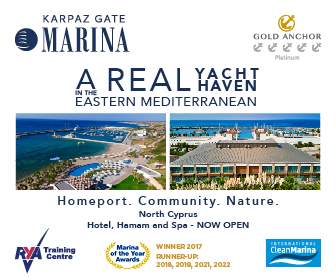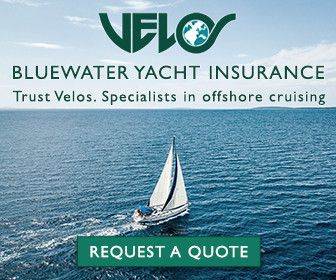Norway - Communications
The International dialing code for Norway is +47.
VHF
The mainland coast has extensive VHF coverage, with only a few exceptions in areas deep within fjords with high shores.
It is required to keep a listening watch for weather and navigation warnings on channel 16.
Coast radio stations offer VHF-to-telephone link calls but are expensive. A mobile phone is a cheaper, easier option with a shorter range.
For non-emergency calls and harbour contact, Telenor (Maritim Radio) keeps a list of the VHF working channels for all coast radio stations at: https://www.kystradio.no/s/article/N%C3%B8dprosedyrer-og-kanalplaner?language=en_US
Mobile phones are the preferred method of communication between boats.
Telephone Services
The dominating phone system is GSM mobile, which covers 99% of the landmass. Conventional telephone also has near 100% coverage, but the usage of public telephone booths is falling as mobile takes over.
Mobile Phones
Most European mobile phones work in Norway. Simply put yourself on roaming and you can use your home data at no extra cost.
Non-European cruisers can use their own phone with regular plans, but international roaming and data charges must be checked with providers. You can purchase a SIM or ESIM for use in Norway, either with your own phone, if your provider unlocks it, or with a new phone.
MRSIMCARD, mycall, GigSky, and ByteSIM are the companies that have the most positive feedback.
Internet
Most of the country is covered by broadband internet, including sparsely populated remote regions.
In the cities, it is generally possible to locate a WiFi hotspot or an internet café. WiFi access is also common in hotels, railway stations, on trains, ferries and increasingly in the harbours. In more remote spots actual access may prove more cumbersome; it may be necessary (and rarely difficult) to ask for a loan of a private connection in cafés or shops.
FM Radio
Norway’s new government plans to maintain local radio on FM until 2031, following the closure of national broadcasters in 2017 and transition to digital only networks.
Last updated: August 2024
If you have information for this section, or feedback on businesses used, please let us know at editor@noonsite.com. We also welcome new information about businesses you have used (see Related Businesses).
Next Section: General Info: Diplomatic Missions
Related to following destinations: Norway
Country Navigation
Courtesy Flag Discounts


YachtFlags.com provides high quality courtesy flags that are manufactured in durable Knitted Polyester fabric. Knitted so that the fabric itself does not deteriorate in the constant movement that marine flags are usually exposed to, and polyester so that the flag does not weaken in the strong UV-light usually found in the main sailing areas of the world.
YachtFlags.com offers a discount to Noonsite members.
Use the coupon code NOONSITE_5A2B when checking out to get 10% off today.
Buy Now On YachtFlags.comMain Ports - Norway
Courtesy Flag Discounts



YachtFlags.com provides high quality courtesy flags that are manufactured in durable Knitted Polyester fabric. Knitted so that the fabric itself does not deteriorate in the constant movement that marine flags are usually exposed to, and polyester so that the flag does not weaken in the strong UV-light usually found in the main sailing areas of the world.
YachtFlags.com offers a discount to Noonsite members.
Use the coupon code NOONSITE_5A2B when checking out to get 10% off today.
Buy Now On YachtFlags.comFormalities
Courtesy Flag Discounts



YachtFlags.com provides high quality courtesy flags that are manufactured in durable Knitted Polyester fabric. Knitted so that the fabric itself does not deteriorate in the constant movement that marine flags are usually exposed to, and polyester so that the flag does not weaken in the strong UV-light usually found in the main sailing areas of the world.
YachtFlags.com offers a discount to Noonsite members.
Use the coupon code NOONSITE_5A2B when checking out to get 10% off today.
Buy Now On YachtFlags.com



Clearance August 2024:
We tried to set up a SeaSafe account, but didn’t manage because it seems to be set up for professionals only. We arrived from Scotland without prior notice, then called +4702800. We were transferred to a border force officer, who informed us that we should have notified them by e-mail prior to coming to Norway. The e-mail address for arriving in Agder Province (Southern Norway) is: Agder.grensekontroll@politiet.no
No one needs to take a test before or after entering Norway. The info on here is dated.
Thanks for letting us know Steve – really helpful. Yes I see rules changed last week and we’ve updated the biosecurity section accordingly.
The best pilot guide we used was, in fact, an app downloaded to our iPad and phone: https://www.harbourguide.com.
Norway is very capable when it comes to gas refilling. We found that our existing UK Calor bottles could be refilled with Propane by a professional for the same or less than in the UK. We did not have to buy a Norwegian bottle.
Rorvik and Harstad are where we filled our bottles but it seems like you can do it in most major towns. This site is useful: https://www.mylpg.eu/stations/norway/
To be more precise phasing out is a process as I have explained here: http://59nord.pl/en/radio-2/
It will be finished at the and of the current year, so there is still a good chance that this season visitors to Norway may be able to use their FM receivers.
When it comes to weather forecasts I have elaborated on that here: http://59nord.pl/en/weather-forcast-on-nrk-radio/ and here: http://59nord.pl/en/marine-radio-weather-forecast/
I want to highlight that Norwegian radio has shut down their FM senders from 2017 and the only way to access public radio is by having Dab+ in your boat as this is the only transmission remaining.
To access weather, check VHF Ch 16 where they inform which working channel they will broadcast the weather every day at 9:00, 12:00, 15:00 and 21:00 local time.
Being Norwegian, I would like to expand on your statement about all shoreline being private (Restrictions section).
Few countries, if any, give a sailor better access than Norway. The public intention is to keep all shoreline within 100m open to the public. Deviations from this rule are unfortunately many. Some because of existing buildings when the law was passed, some because of too good lawyers. But the general rule is that you can freely use the shoreline.
You can anchor outside the private property. You can take your dinghy ashore anywhere that is not obviously private. You can spend the day at the shore, collect firewood, and pick berries. All this without asking anybody for permission.
Any “private” signs are most often illegal. With exceptions for the densely populated southeastern part of Norway, the vast majority of the shoreline is free to use.